
Standard Work
25 min read
11 Common Manufacturing Challenges & Solutions | 2023

When it comes to industry, manufacturing might be one of the most challenging. Because of the high cost of doing business, the need for skilled workers, and an ever-tightening market, manufacturing companies face many challenges every day.
Table of Contents
2. Quality Control & Inspection
5. Equipment Maintenance & Downtime
10. Sustainability & Environmental Concerns
11. Market Demand Fluctuations
Throw in a global pandemic and collapsing supply chains, and manufacturing companies face a brave new world.
Alongside the common manufacturing challenges that companies regularly face, like figuring out how to cut costs while simultaneously boosting productivity, the industry is busy learning lessons brought about by the upheaval of the last few years.
For example, a disjointed supply chain can lead to increased costs, delays, and a decrease in productivity, making it harder to get products to the customer on time while still making a profit.
In this article, we discuss the 11 common manufacturing challenges, some ever-present within the industry and others just emerging. More importantly, we will discuss how manufacturers can solve these challenges.
Supply Chain Management
One common manufacturing challenge faced by manufacturers is supply chain management. While this is not a new challenge, what happened during and after the pandemic certainly highlighted its importance.
And it is not only important to manage the supply chain but also to have a contingency plan in place to mitigate the risk to businesses when the next global event rolls around.
And even now, as things return to "normal," the effects of the pandemic linger for manufacturers in the form of higher costs and harder-to-source raw materials. Let’s look at some of the typical supply chain challenges.
● Sourcing Raw Materials
Manufacturers rely on a steady, reliable source of raw materials. But the last several years have strained businesses in the form of raw material shortages and rising prices. One study revealed that 94% of Fortune 1000 companies experienced supply chain disruptions due to the Covid-19 pandemic.
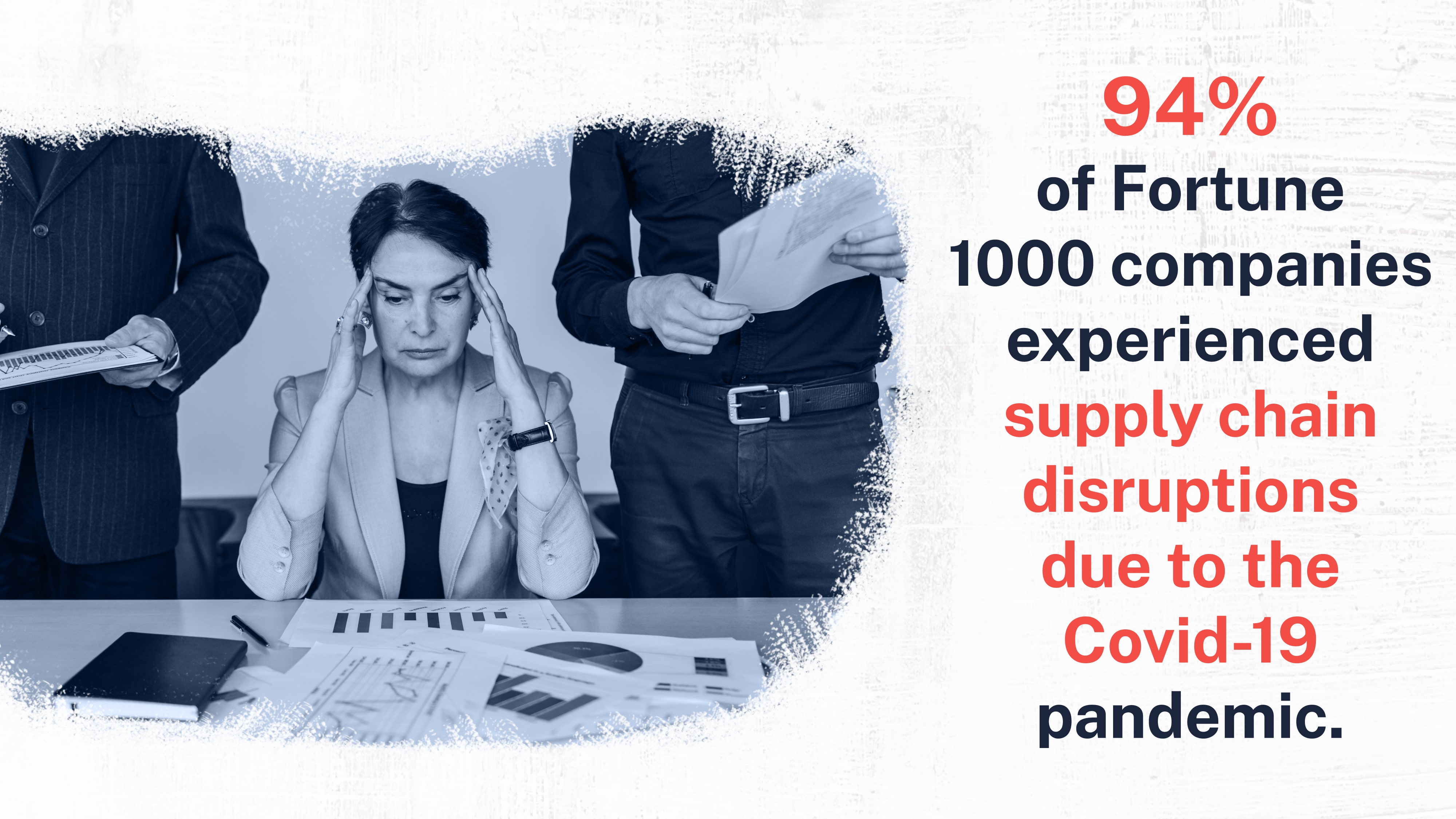
● Managing Inventory
A shift in the cost and availability of raw materials and rising container and transportation costs has put greater importance on concepts like just-in-time manufacturing. Companies faced with rising prices are struggling to balance operational and inventory costs with the budget while simultaneously facing an increasing need for accurate demand forecasting.
● Optimizing Logistics Systems
Innovation in the industry is driving an increasing demand for digital transformation within logistics systems. Technologies like AI and machine learning, robotics, and automation transform supply chain systems. However, the growing complexity of supply chains and logistics systems can challenge implementing new tech.
Solutions for Supply Chain Management Challenges:
Manufacturers must focus more on building a resilient and flexible supply chain. Post-pandemic, 93% of senior supply-chain executives report they intend to do just that. Manufacturers must also work to implement solutions that increase the visibility and oversight of logistics systems. This will increase the success of JIT manufacturing and last-mile delivery so businesses can meet customer demand for fast, accessible products head-on.
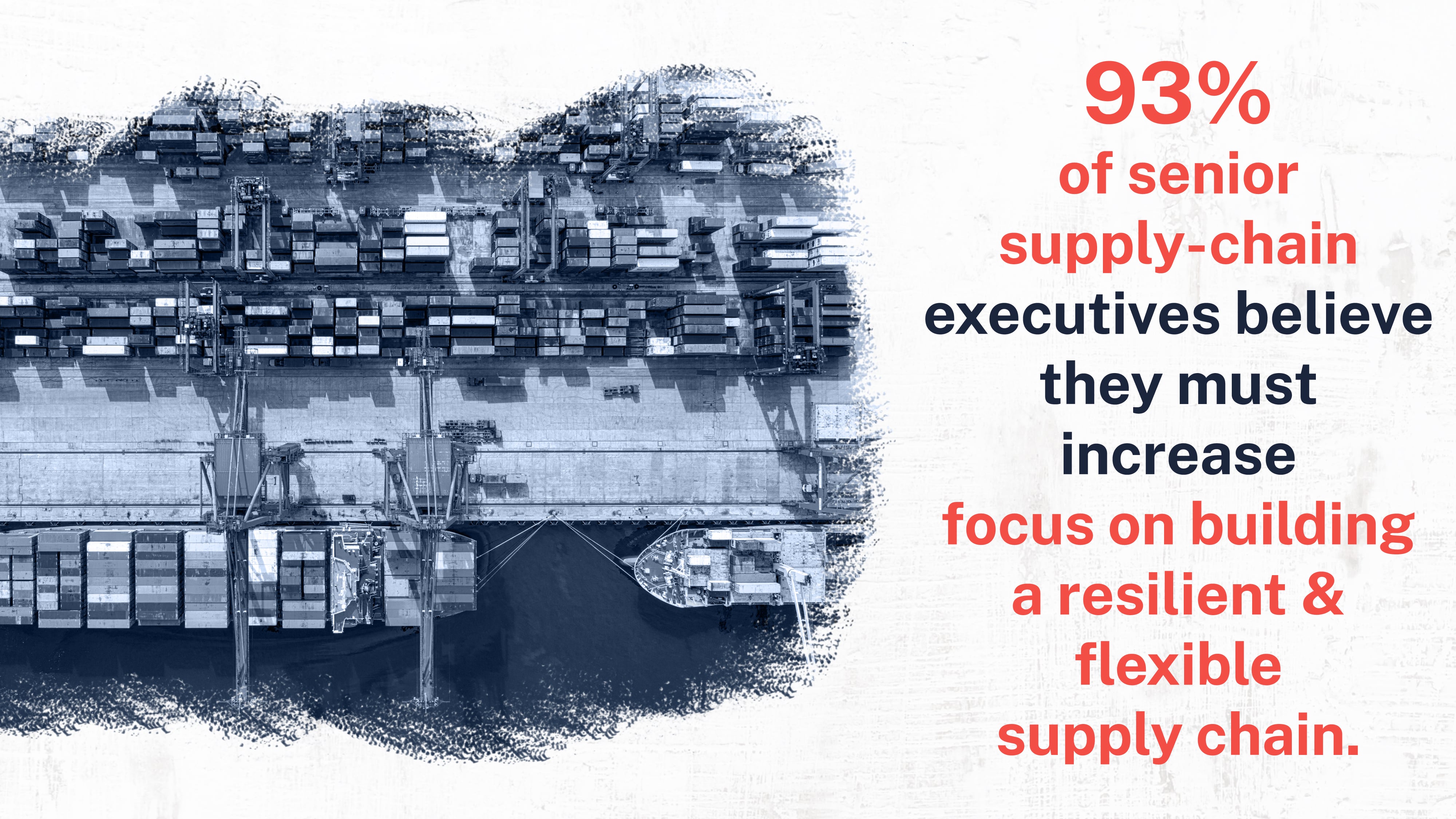
Quality Control & Inspection
Maintaining consistent product quality is essential for manufacturers who want to build a loyal customer base and remain competitive. Product defects cost manufacturers time and money and can cause a hit to their reputation.
Here are a few manufacturing challenges related to quality control.
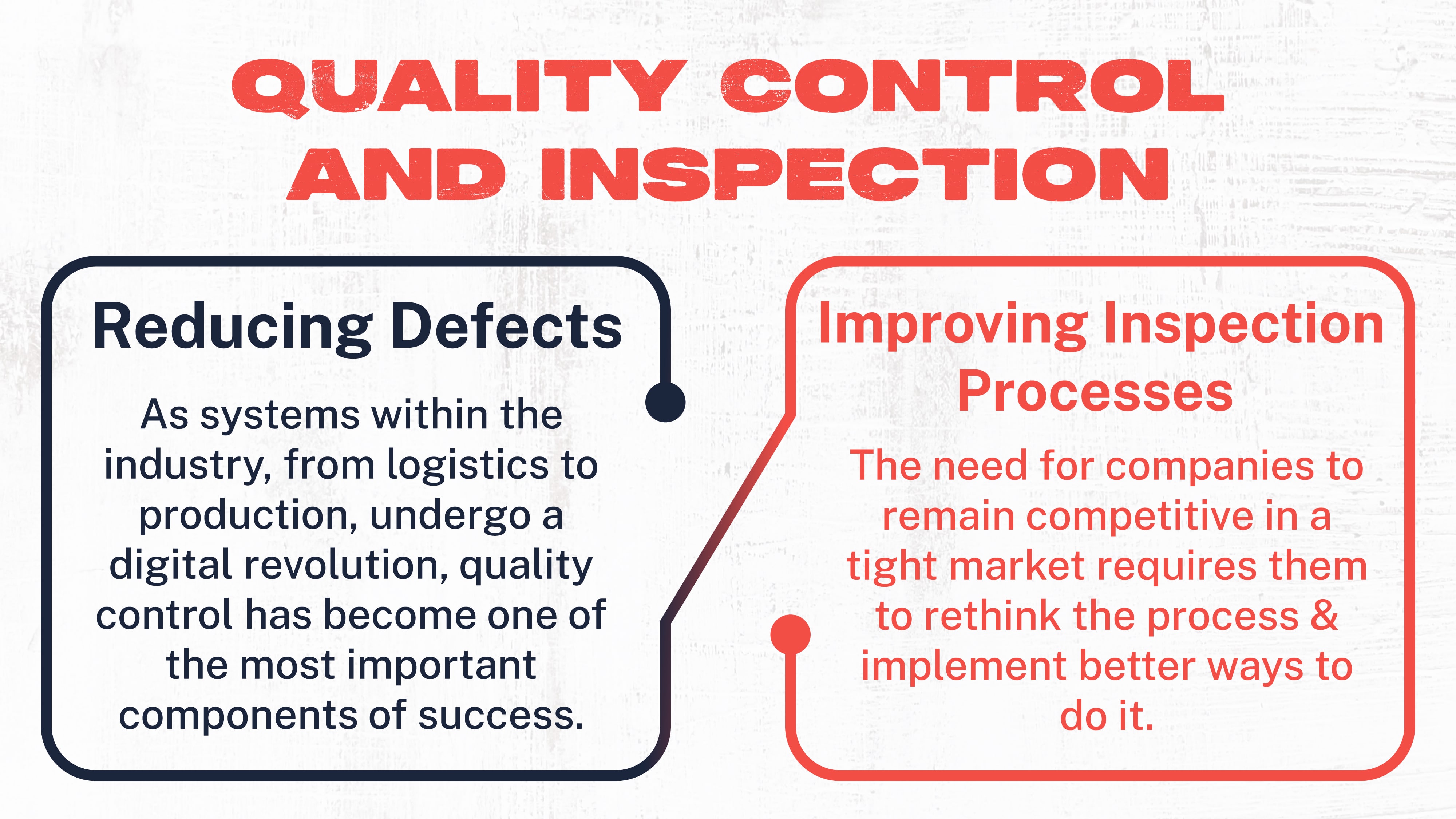
● Reducing Defects
Figuring out how to reduce defects within production systems has forever challenged manufacturers. And as systems within the industry, from logistics to production, undergo a digital revolution, quality control has become one of the most critical components of success. New and improved technologies only work when the output is as good, or better, as it was with legacy systems.
● Improving Inspection Processes
As the importance of quality control grows, manufacturers have discovered a need for new and improved inspection processes. But the requirement for companies to remain competitive in a tight market requires companies to rethink the process and implement better ways to do it.
Solutions for Quality Control & Inspection Challenges:
Upgrading to new and improved inspection processes is essential for businesses that want to maintain a high-quality output. The days of paper checklists are past, and today’s industry requires technological solutions to remain competitive.
Real-time data monitoring, integrated reporting systems, automation, and digital sensors are coming together under the umbrella of the IoT (Internet of Things). Statistical process control methods can help companies build a more robust QC system. Quality control is one area where new technology and improved processes can make an immense difference.
Workforce Management
One of the most significant manufacturing challenges of the past few decades is workforce management. The struggle for manufacturers to attract and maintain skilled workers as current workers reach retirement age is only becoming more complex.
A global labor shortage brought about by “The Great Resignation” certainly didn’t help the issue. Here are some of the everyday workforce management challenges manufacturers are dealing with.
● Labor Shortages
While manufacturers have known for decades that they were facing a growing need to attract and retain skilled labor, the shift in the post-pandemic labor force only highlighted that need. More than 50 million workers resigned from their jobs in 2022.
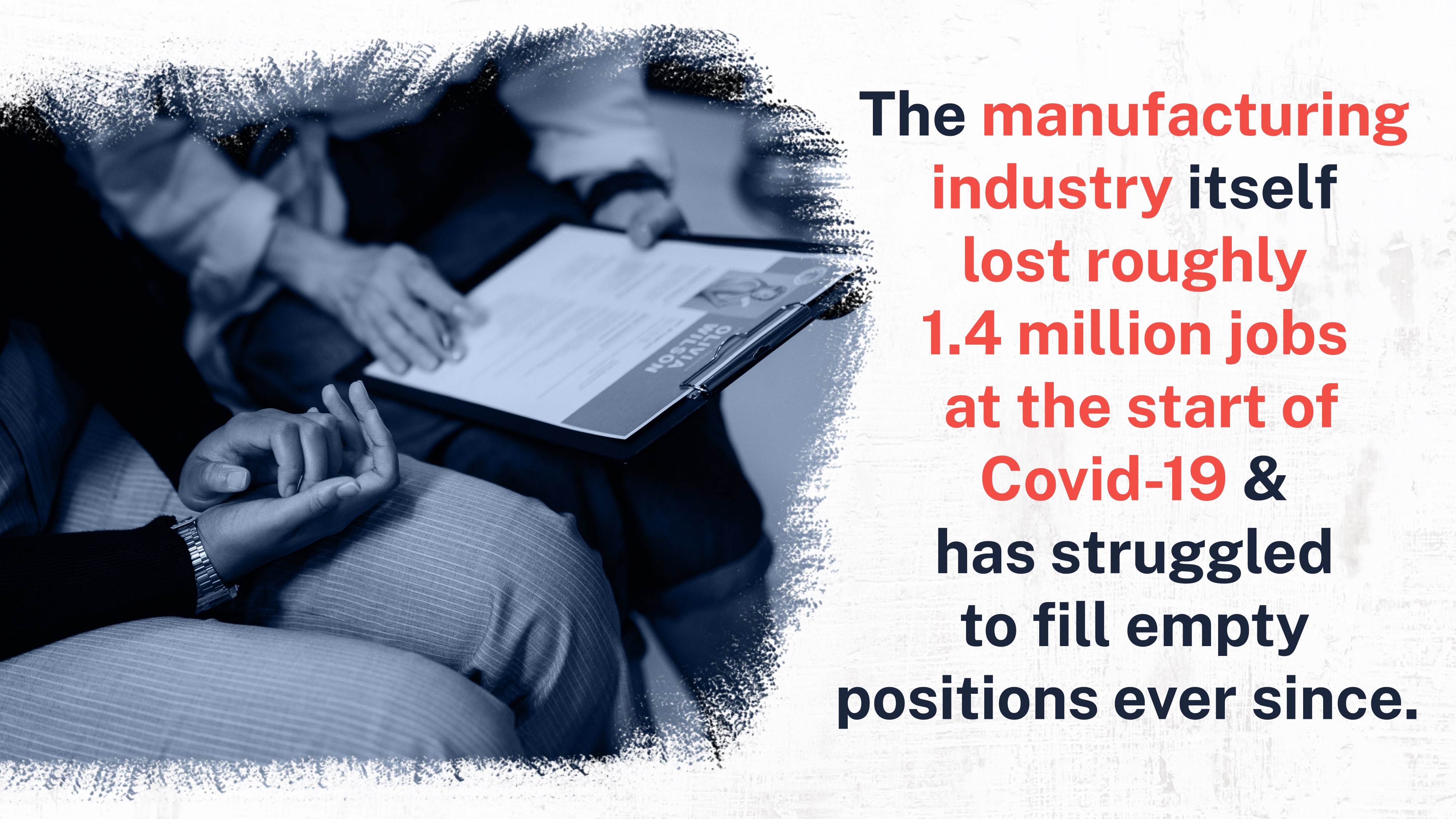
The manufacturing industry lost roughly 1.4 million jobs just at the start of the pandemic and has struggled to fill empty positions ever since. As of March of 2023, there were approximately 693,000 manufacturing job openings in the U.S.
● Skill Gaps
Finding workers to fill roles in the manufacturing industry is challenging already. Finding workers with the skills and training to do those jobs successfully is another issue. In 2020, nearly a quarter of the manufacturing workforce was 55 or older – meaning a good percentage of the workforce is nearing retirement. Manufacturers are struggling to find skilled workers to replace these employees.
● Employee Engagement
Employee engagement is a challenge for businesses from every industry, but the importance for manufacturers is more significant because they are already facing a labor crisis. Keeping workers engaged and satisfied is vital to keeping them with a company long-term.
Solutions for Workforce Management Challenges:
Solving the problem of workforce management requires a multi-faceted approach. It starts with a greater focus on boosting retention rates, meaning keeping the employees already in place happy and engaged.
Also required is an increased focus on training and development, focusing on cross-functional collaboration, not only to motivate current employees but to train the next generation of lifetime employees. And lastly, manufacturers will benefit from implementing automation and robotics – not to replace human workers but to augment a workforce and make it more resilient and productive.
Operational Efficiency
One of the most persistent manufacturing challenges is figuring out how to boost operational efficiency. The key to success for manufacturers is learning how to do more with less while maintaining a high-quality output for customers.
● Streamlining Production Processes
One of the most effective initiatives for manufacturing companies is implementing programs to streamline production processes to boost productivity. Removing non-value-adding steps in a production process helps companies focus on necessary tasks without wasting time and energy elsewhere.
● Reducing Waste
Lean manufacturing practices aim to improve operational efficiency and boost revenue by cutting out unnecessary waste. Reducing defects, cutting back on downtime, and being savvier about inventory management and resource allocation can all increase operational efficiency by reducing wasted time, energy, and money.
Solutions for Operational Efficiency Challenges:
The secret to operational efficiency has been discussed in manufacturing company boardrooms for over a century. Solutions like lean manufacturing and continuous improvement methodologies like Six Sigma have been around for nearly as long.
However, advancements in technology and how manufacturers can use it have reinvented the solutions to operational efficiency. Investing in that technology and implementing it in places with the most significant impact is essential.
Equipment Maintenance & Downtime
Manufacturing relies on a combination of human labor and machinery. Managing equipment maintenance efficiently and reducing planned and unplanned downtime is one of the most persistent manufacturing challenges.
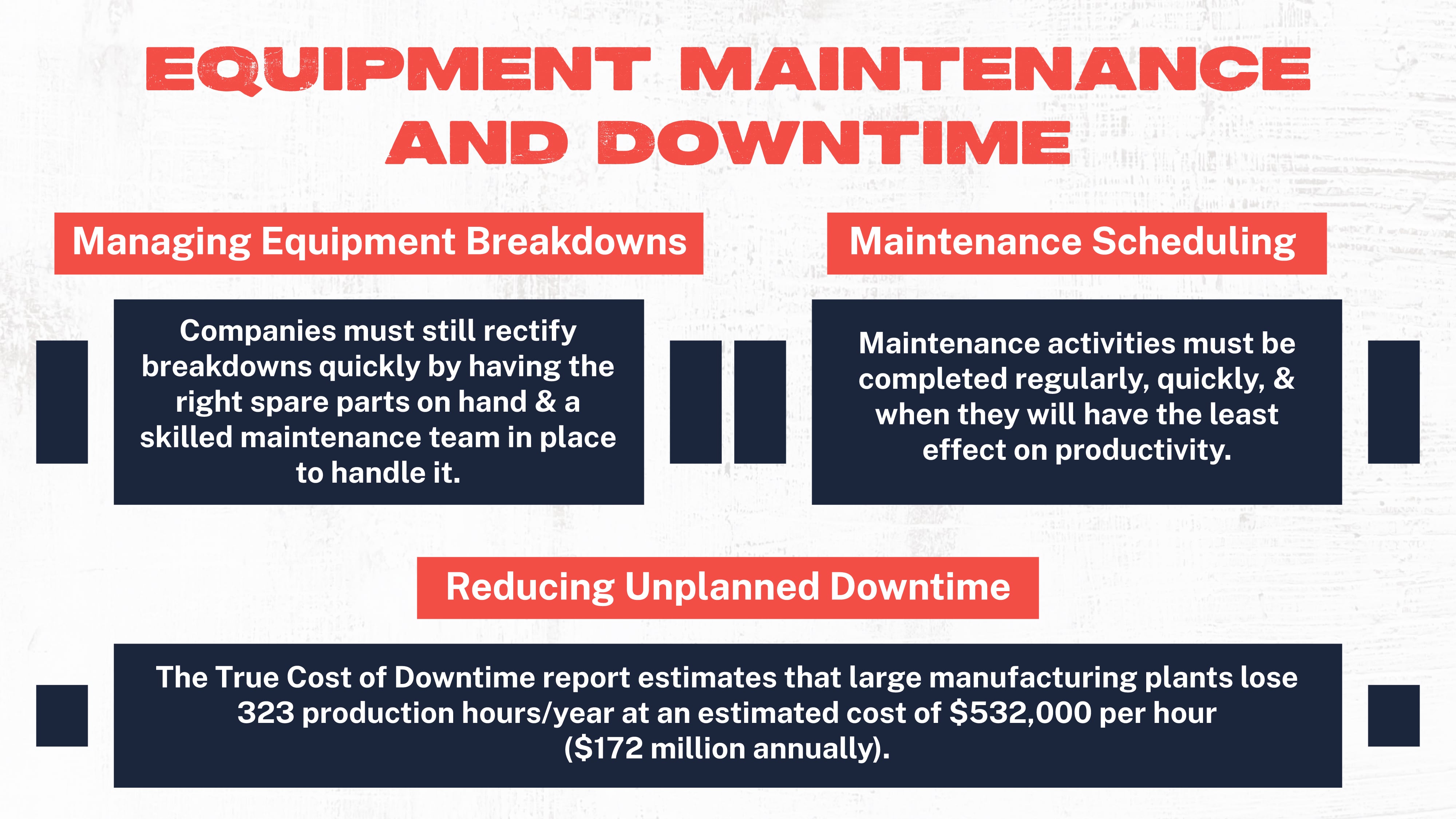
● Managing Equipment Breakdowns
Equipment breakdowns happen. It’s just the cost of doing business. But minimizing and managing those breakdowns efficiently can be a challenge. Preventing them all together would be ideal. But when that's not possible, companies must still rectify breakdowns quickly by having the fitting spare parts on hand and a skilled maintenance team ready to go.
● Maintenance Scheduling
Figuring out the best way to schedule routine maintenance is one of the most essential tasks of the maintenance department. Maintenance activities must be completed regularly, quickly, and when they have the most negligible effect on productivity.
● Reducing Unplanned Downtime
When equipment breaks down, work stops. This is one of the costliest scenarios that manufacturers face daily – unplanned downtime. The True Cost of Downtime report estimates that, on average, large manufacturing plants lose 323 production hours a year at an estimated cost of $532,000 per hour, or $172 million annually.
Solutions Equipment Maintenance & Downtime Challenges:
Once again, we turn to new and improved processes and advancing technology for a solution to the maintenance problem. Techniques like predictive maintenance are becoming increasingly important for manufacturers, helping them see issues before they arise.
Condition monitoring technologies that track and transmit real-time data can help companies stay on top of maintenance activities. And while innovation is driving progress in reducing downtime, it only underscores the importance of establishing and enforcing a robust equipment maintenance schedule.
Regulatory Compliance
Every manufacturer’s favorite topic is regulatory compliance. Well, probably not. But managing regulatory compliance represents one of the most critical manufacturing challenges because failure to do so can cost companies millions of dollars in fines and penalties.
● Ensuring Product Safety
Producing and selling safe products might be one of the most important goals for manufacturing companies – or at least it should be. Companies are responsible to consumers only to put out high-quality products that perform as they’re expected. Regulatory compliance is one way that the government pushes this objective – virtually forcing companies to behave responsibly.
● Adhering to Environmental Standards
Part two of regulatory compliance deals with a manufacturing organization’s responsibility to the environment. And manufacturing companies have a great incentive to comply with these regulations since the fines can range from $2,500 per day per violation to as much as $25,000 to $1 million per day, depending on the violation.
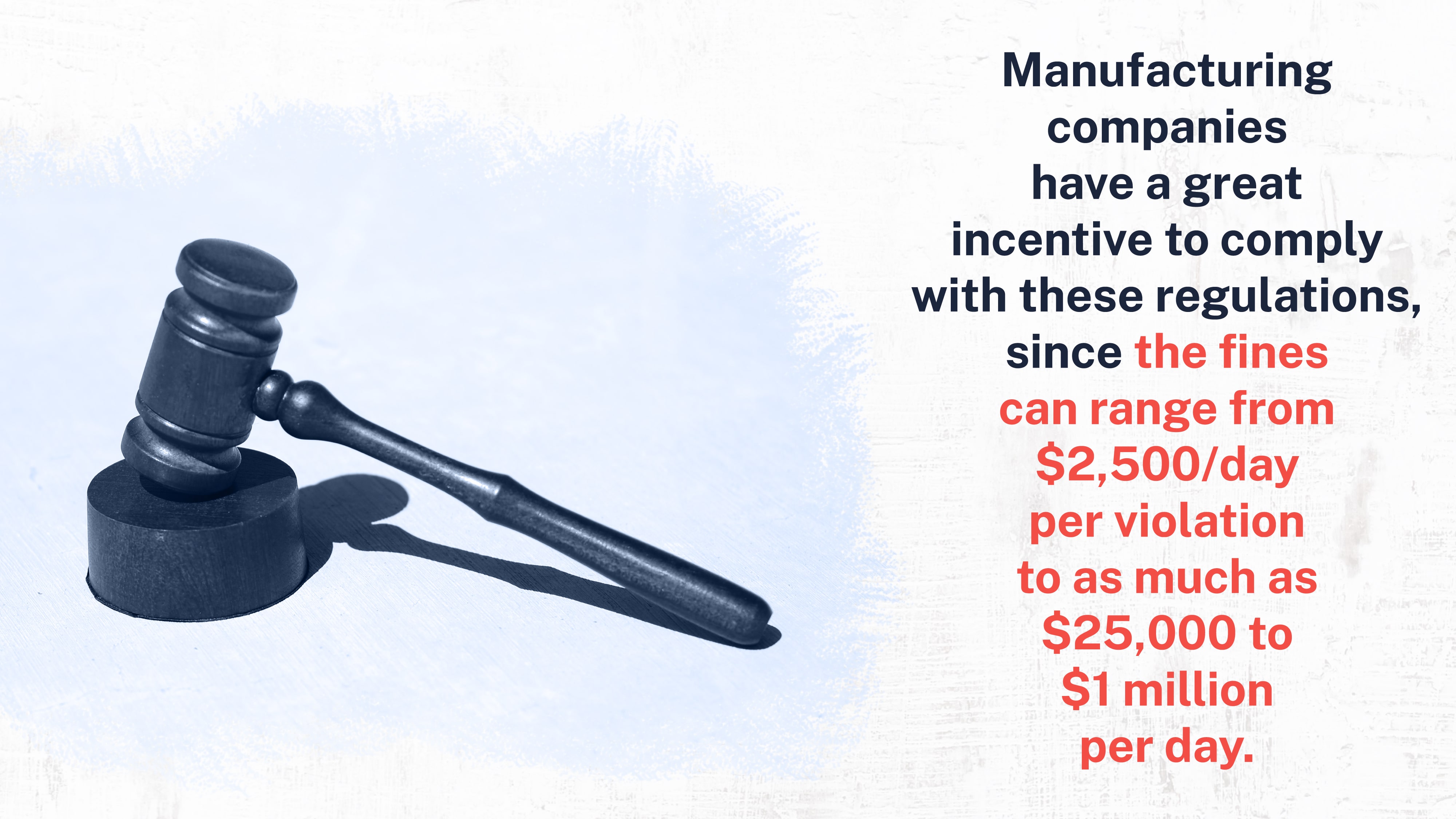
Solutions for Regulatory Compliance Challenges:
Meeting regulatory compliance expectations means implementing the suitable systems. It can’t be a "wish into the wind" process but should include comprehensive compliance management systems. Conducting regular audits ensures every team member is on board. Manufacturers must also keep up to date on new and emerging relevant regulation changes so they can adjust quickly.
Technology Integration
Technology has always been important in manufacturing, but never on as big a scale as the industry is experiencing today. One of the most significant recent manufacturing challenges is solving the problem of integrating new technologies into existing systems.
● Making Smart Investments
Technologies like AI, automation, machine learning, and digital tools are expensive. Depending on an organization's size, digitization investments can be overwhelmingly costly. Rather than throwing money at a problem and spending over-zealously can make technology more hindering than helpful. Focusing on investing in the right areas is critical.
● Complexity of Systems
Production systems within a manufacturing facility can range from simple to incredibly complex. And one system often relies on another. This means implementing new technologies can take time and effort. Think of it like a stack of blocks.
Replacing one block on the very bottom can increase the stability of the entire structure, but not without risking the strength of the rest of the blocks at the top. This is precisely why companies must focus on technologies that can integrate across systems.
● Training and Development
Regarding manufacturing, the people must work in conjunction with the machinery. Implementing new technologies is great, but only if you have employees trained and ready to step in and run those new systems.
Solutions for Technology Integration Challenges:
Companies can make the most of their investments by conducting thorough technology assessments of existing and new systems. Manufacturers need information and data about what is already working, what needs to be improved, and how improvements are performed.
Secondly, investing in employee training and support should go hand in hand with investments in tech. And lastly, manufacturers can partner with technology vendors, leaning on their support and guidance to allow for more seamless integration.
Cost Management
Manufacturing companies must always be aware of cost – something that 79% of companies have attempted to cut after the Covid-19 crisis. Data suggests that less than 30% of cost-cutting programs achieve their goals. Solving the cost management problem is one of the most complex manufacturing challenges to solve.
● Managing Overhead
Finding ways to reduce overhead costs allows companies to make a more significant profit, and every business wants that. But it also frees up money for investing in new machinery, expansion projects, and digital innovations. Figuring out how to manage overhead costs effectively without affecting productivity or the quality of output is a significant manufacturing challenge.
● Optimizing Resource Allocation
Rising material and labor costs play a big role in the rising importance of cost management. What was previously a goal of manufacturing has become a priority because of the increasing cost of doing business.
Figuring out how to manage and allocate resources effectively, from the raw materials obtained through the supply chain to the human labor needed for production, can help manufacturers manage costs more successfully.
Solutions for Cost Management Challenges:
The most effective approach to cost management is an analytical one, and that requires data. Here again, is an area where technological solutions can make a difference. Implementing improved cost accounting systems and conducting regular cost analysis activities can give greater insight and visibility into a company's operational expenses.
With greater information and data, organizations can make better decisions related to cost-reduction activities. An openness and willingness to explore strategic sourcing solutions and cost-reduction programs are also essential.
Cybersecurity
As the use of technology increases in the manufacturing industry, so does the importance of cybersecurity. But for manufacturers, cybersecurity tasks must protect both the consumer and the organization. The economic impact of cyberattacks is hard to quantify, but estimates put it somewhere between $400 billion to more than $2 trillion.
● Protecting Intellectual Property
One of a manufacturing company's greatest assets is its intellectual property. Patents, copyrights, and trademarks allow companies to protect their ideas and products from competitors and unscrupulous parties. But with data moving almost exclusively to the digital domain, companies face an increased risk of losing their valuable IP to theft.
● Securing Sensitive Data
Manufacturing companies also hold a plethora of sensitive data within their systems, from contract information with suppliers, partners, and investors to in-depth data related to their customers. Protecting data from theft is not only a responsibility of companies in today's environment but critical from a business success perspective.
Solutions for Cybersecurity Challenges:
Protecting sensitive data and intellectual property from prying eyes requires foresight. It’s not a problem that companies can deal with after it happens. Instead, manufacturers must take a proactive approach to building robust systems and implementing safeguards.
Regular security audits can help identify potential problem areas. And lastly, training employees so that they are aware of cybersecurity threats is essential for creating a team that is always on guard.
Sustainability & Environmental Concerns
Environmental concerns are one of the biggest manufacturing challenges of the past few decades. And it’s not just from a regulatory standpoint, but because of an increased focus from the public consumer as well.

According to one study, 38% of global consumers believe businesses should make responsible production and consumption a priority.
● Reducing Environmental Impact
Understanding how to reduce environmental impact requires an understanding that it’s a backward process for manufacturing companies. Production inevitably has an effect. Reducing that effect needs to start at the beginning, in the design of facilities, production process, and even product design.
● Managing Waste
Another critical aspect of reducing the environmental impact of manufacturing relates to the decision of how to manage the waste created by production. Seeking ways to remove waste from the equation or reinvest waste back into the system through recycling or reuse programs, can mitigate the impact of production processes.
● Promoting Sustainable Practices
Sustainable practices are receiving an increasing focus and one that is not going away anytime soon. Both governmental bodies and the global population are seeking to build a more sustainable future, and that means greater participation from manufacturing companies. Finding ways to do exactly that is a major manufacturing challenge for organizations worldwide.
Solutions for Sustainability & Environmental Challenges:
Environmentally friendly manufacturing is a possibility, but it requires effort at every level of production. It starts with building eco-friendly manufacturing processes, which means increased attention to the steps within a process and their impact on the environment. Adopting circular economy principles and exploring renewable energy options can make a huge difference in the overall environmental impact of an organization.
Market Demand Fluctuations
Ah, the ever-fluctuating market – one of the constants of any industry. Regarding manufacturing challenges, predicting, and meeting market demand is a must-do. But never has the market been as unpredictable as it is right now.
● Seasonal Variations
The manufacturing industry has always faced the possibility of seasonal demand variations. An increase in consumer demand only amplifies that problem, and a market with greater buying power and higher expectations means an increased need for companies to predict and plan for these types of fluctuations.
● Market Volatility
If the Covid-19 pandemic taught manufacturers anything, it was to expect the unexpected. Forecasting demand can help businesses predict likely scenarios based on the information available and consumer behaviors. But the challenge of predicting the unpredictable means that companies must not only focus on forecasting but also on solutions that allow for a quicker and more flexible response to market fluctuations.
Solutions for Market Demand Challenges:
Demand forecasting models are one of the most useful tools in a manufacturing company’s arsenal. The ability to see into the future, once again, using technology is something organizations must take advantage of now.
Adopting flexible manufacturing strategies can help companies balance inventory with demand while also reducing overhead costs. And perhaps most importantly post-Covid, developing agile supply chains that can react and respond quickly to changes in demand can help protect against market volatility and uncertainty.
Final Thoughts
Manufacturing challenges are ever-present and often unique to the industry. And as the industry itself revolutionizes through things like Industry 4.0 and the IoT, these challenges are having a greater impact on a company’s ability to remain both competitive and solvent.
Meeting any challenge requires the cooperation of team members at every level. And it also requires out-of-the-box thinking, at least if the goal is to get the best results. Not every initiative will have positive results, especially not right away. But with strategic thinking and planning, companies can build solutions.
Meeting the manufacturing challenges of today’s landscape requires a pairing of innovative technologies and human ingenuity. Put the right strategies in place where they will be the most effective. Implement digital technologies where they will have the greatest impact. And push forward to create a different way of thinking about even the most common problems.
Related Posts
View All Posts
Standard Work
How Sloppy Revision Control Cost WIPP Half a Billion Dollars
5 min read
In 2014 a nuclear Waste Isolation Pilot Plant (WIPP) in Carlsbad, NM was the victim of poor revision control practices that lead to a half-billion dollar mistake; shutting...
Continue Reading
Standard Work
What Caused the False Missile Alert in Hawaii
5 min read
Apparently, it was a simple mistake that caused the false missile alert to be sent to phones across the state of Hawaii. And while citizens were still recovering from the...
Continue Reading
Continuous Improvement
Why Standard Work is a Contradiction
4 min read
We recently wrote a popular article about a major mistake at a nuclear waste facility. In short, we cited poor standard revision processes as the root cause of the mistake,...
Continue Reading



